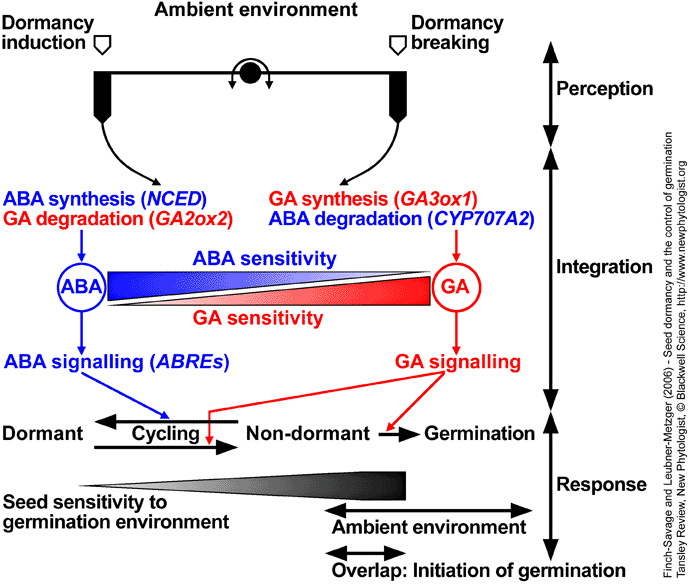Tansley Review - New Phytologist 171: 501-523 (2006)
Seed dormancy and the control of germination
(2) Institut für Biologie II (Botanik/Pflanzenphysiologie), Albert-Ludwigs-Universität Freiburg, Schänzlestr. 1, D-79104 Freiburg i. Br., Germany, Web: 'The Seed Biology Place' http://www.seedbiology.de
Received February 23, 2006; accepted March 27, 2006; published

Figure 8. Model for the regulation of dormancy and germination by absicisic acid (ABA) and gibberellin (GA) in response to the environment. According to this model ambient environmental factors (e.g. temperature) affect the ABA/GA balance and the sensitivity to these hormones. ABA synthesis and signalling (GA catabolism) dominates the dormant state, whereas, GA synthesis and signalling (ABA catabolism) dominates the transition to germination. The complex interplay between hormone synthesis, degradation and sensitivities in response to ambient environmental conditions can result in dormancy cycling. Change in the depth of dormancy alters the requirements for germination (sensitivity to the germination environment); when these overlap with changing ambient conditions, germination will proceed to completion. Model based on work with A. thaliana ecotype Cvi, modified from Cadman et al. (2006) and reprinted with permission from Blackwell Publishing. Key target genes are in parenthesis.
| Article in PDF format (2 MB) |
|
|
|
The Seed Biology Place
|
Webdesign Gerhard Leubner 2000
|